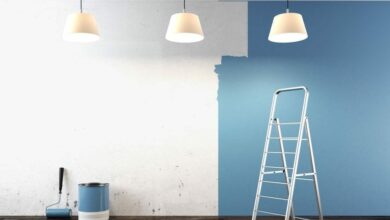10 Most Popular Eco-Friendly Flooring Solutions

There was a time when the term eco conjured up images of bland, boring, blah materials. Fortunately, that is not the case today. As more and more designers look to eco-friendly materials for their environmentally conscious customers, manufacturers have stepped up and given the design world plenty of beautiful options to choose from. We’ve put together a guide to the most popular green flooring solutions, some are new, some are old, and some will make you think.
10 green flooring options
1. cork

Elena Eliseeva/Shutterstock
Cork is relatively new to the world of flooring.. It’s usually seen on the walls or your favorite wine bottle, but it’s a great material for flooring. Cork is harvested from the bark of the cork oak commonly found in Mediterranean forests. The trees are not cut down to harvest the bark, which will regrow every three years, making it an ideal renewable source. It has antimicrobial properties that reduce allergens in the home, is fire retardant, easy to maintain, and also acts as a natural insect repellant.
[deals-hub-ad]
Cork, like wood, can be finished in a variety of paints and stains to suit any color scheme or design style. Its durability allows uses in any part of the house. Cork floors, depending on the quality, can last between 10 and 30 years.
2. Bamboo

Bakery / Shutterstock
bamboo flooring is another option similar to wood that is gaining popularity. It is actually a grass that shares similar characteristics to hardwood. It is durable, easy to maintain and easy to install. Bamboo is sustainable and made from natural vegetation that grows to maturity in three to five years, much less than the twenty years it can take for trees.
Bamboo, while typically very lightweight, is available in many shades that will work in any setting or decor. Its varied grains and wide range of colors give it an edge over traditional flooring by allowing customization not often found elsewhere.
3. Linoleum

urfinguss / Getty Images
when one thinks of linoleum flooring, vinyl tends to come to mind, and yet the two are nowhere near each other. Vinyl is a synthetic made from chlorinated petrochemicals that are harmful. Linoleum is created from a mixture of linseed oil, cork dust, tree resins, wood flour, pigments, and ground limestone.
Like cork, it is fire retardant and water resistant. Linoleum is not new to the market; It fell out of favor with the introduction of vinyl in the 1940s. When architects and designers began asking for it again, it resurfaced with a wide range of bright, vibrant colors and a new sealer to protect it from staining. It has a long lifespan and will hold up to a lot of wear and tear.
4. Glass tiles

Robert Kneschke/EyeEm/Getty Images
Ever wonder what happens to wine bottles and beer bottles that are sent to the recycler? they turn into beautiful glass tiles. This renewable source is quickly becoming a great choice for bathroom and kitchen floors and walls. Glass has similar benefits to other eco-friendly materials. It is non-absorbent and will not mold or mildew in humid environments. It is easy to maintain and does not stain.
Glass comes in an unlimited variety of colors, patterns, and finishes suitable for most design schemes. Unlike ceramic tile, glass will reflect light rather than absorb it, adding that extra layer of light some rooms need.
5. Concrete

PlusONE/Shutterstock
Polished concrete it is an unlikely sustainable material that is gaining popularity. Concrete is typically a grade slab and is used as a subfloor in some residential settings. If it is polished and stained to the homeowners taste and style, it is not necessary to lay traditional flooring over it.
From creating a mosaic effect with different colors to embedding other materials like glass, the design possibilities are endless. Concrete is extremely durable, easy to clean, and never needs to be replaced.
6. Wool rug

scyther5 / Getty Images
Carpet has long been a favorite material for most homes. It’s soft to walk on, comfortable to sit on, and comes in a variety of colors and designs. Unfortunately, carpets are often made with volatile organic compounds or toxins that are harmful to the environment and our health.
However, there are ecological options. Consider rugs made of wool. Wool is a natural resource woven into a yarn that can be dyed any color imaginable and then woven into a rug. It is one of the first materials to be used as floor coverings, it is very durable and can last for centuries. In some families, wool rugs have been passed down from generation to generation making them heirlooms. Other natural materials used to make rugs or rugs are sisal, jute, and cotton.
7. Berber PET rug

KUPRYNENKO ANDRII / Shutterstock
Polyester (PET) Berber is another sustainable rug to consider. It is made from recycled plastic bottles and has a minimal impact on the environment. For every plastic bottle used to create this rug, there is one less in our landfills. There are several benefits of this recycled material. It’s durable, spill-resistant, and comes in a variety of aesthetically pleasing colors and patterns. It typically has a speckled appearance that makes it suitable for most color schemes.
There are also drawbacks. Berber can easily snag and cause it to fall apart if not repaired immediately. Recycled material can be a bit rough to walk on barefoot. Overall, it’s a very inexpensive material and deserves a serious look.
8. Rubber

LightField Studios/Shutterstock
rubber flooring made from recycled tires is usually found at the local gym or neighborhood playground. Little by little it is making its way into our kitchens, sunrooms and bathrooms as a versatile, beautiful and durable option. It’s great for walking and waterproof. It also comes in many color and pattern options.
9. Leather

Pakin Songmor/EyeEm/Getty Images
Leather is an amazing material that can be used as flooring. It is derived from the central part of the cowhide and is thicker than the pieces of leather used for belts, wallets and bags. The warm, soft feel underfoot makes it perfect for bedrooms, closets, and small areas with little foot traffic. It is not a great material for bathrooms, kitchens, or other damp areas of a home. It is very durable and will wear well over time. Distressed, scratched and aged leather develops a personality of its own and can be beautiful to look at for years to come.
10. Reclaimed Hardwood

Martin Leaves/Getty Images
If you have your heart set on traditional hardwood flooring, while not generally considered eco-friendly due to deforestation concerns, it may still be an option. There are two types of hardwood to consider. Reclaimed wood is ideal as it reuses existing wood from trees that were cut down a long, long time ago. Reclaimed hardwood floors can look beautiful in older homes or a beach shack.
The other option is to buy FSC-certified labeled hardwood. This is a designation from the Forest Stewardship Council and they promote the responsible management of forests around the world with a focus on meeting high social and environmental standards.
The bottom line
Fortunately, with today’s technology and a little imagination, green flooring doesn’t have to come at the expense of style. Smart consumers can have both. So what do you think, have eco-friendly materials evolved?




